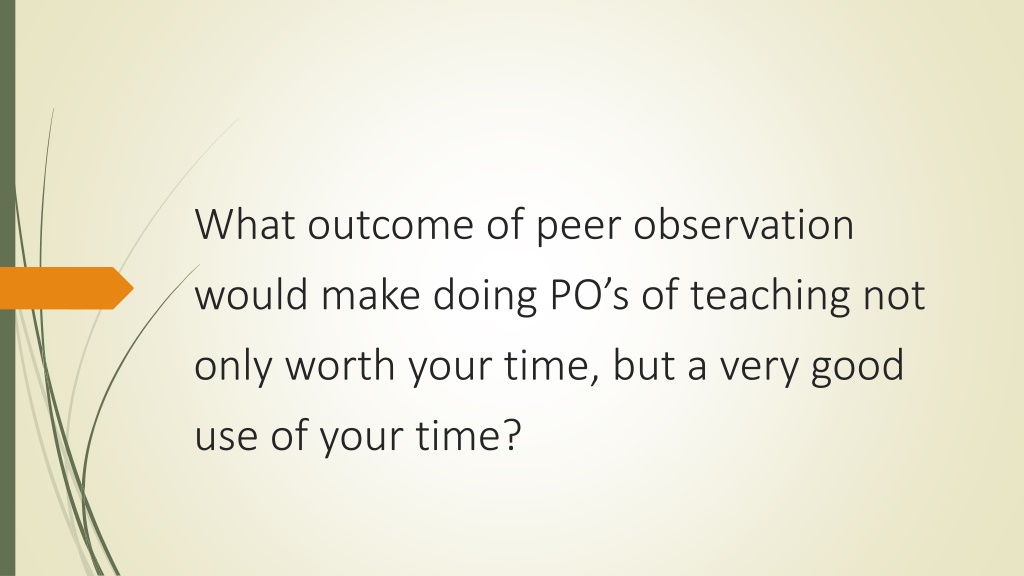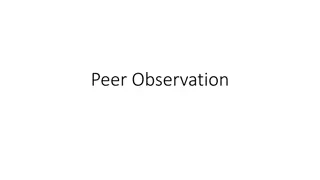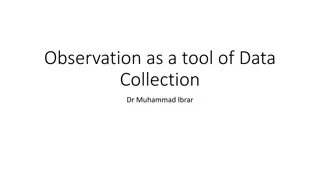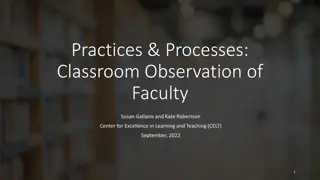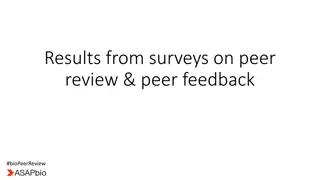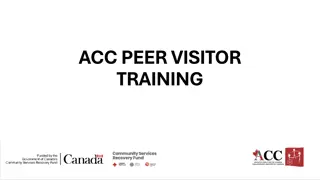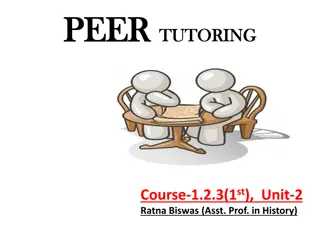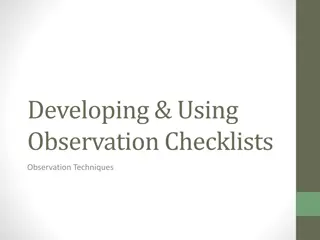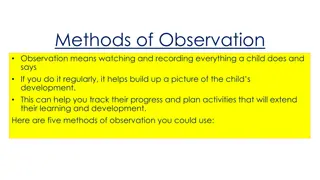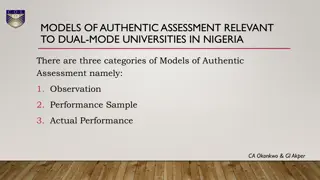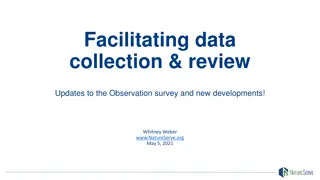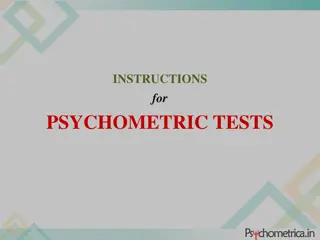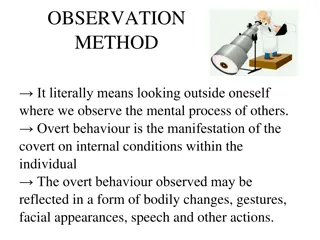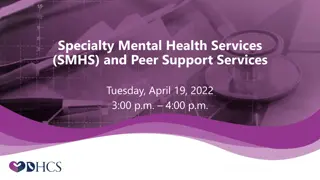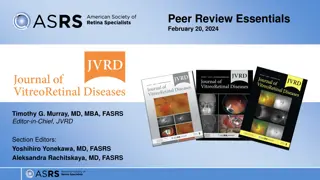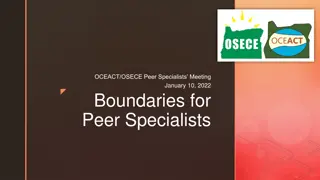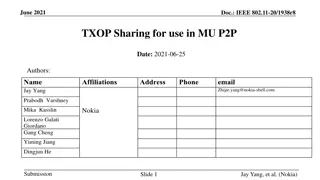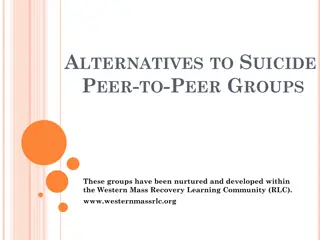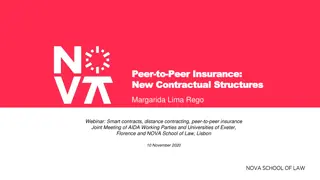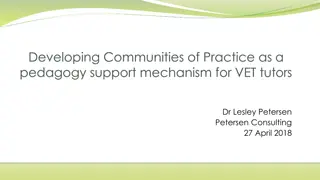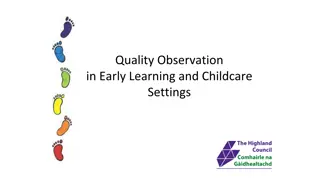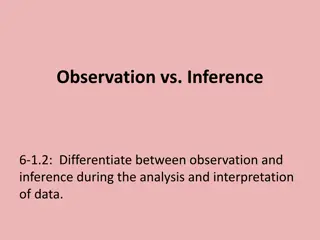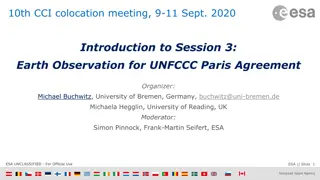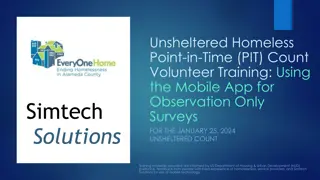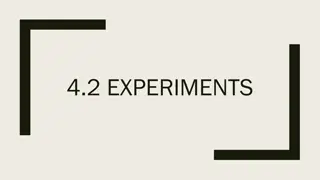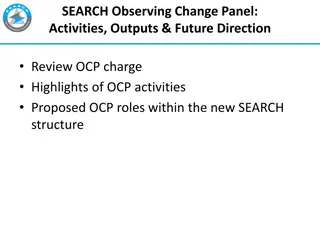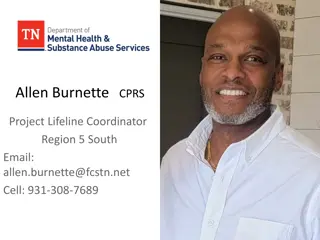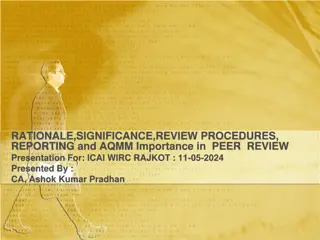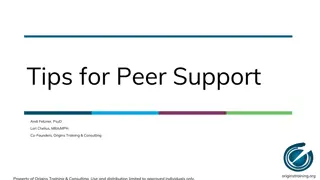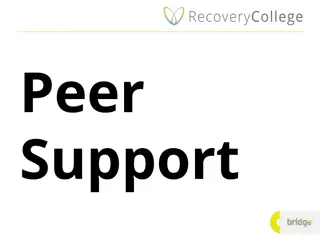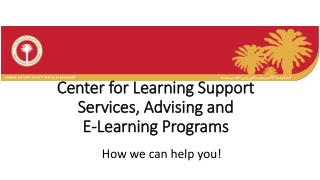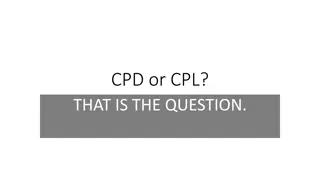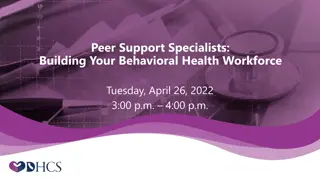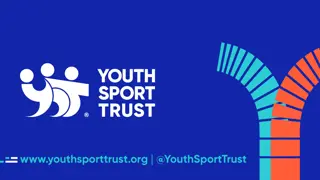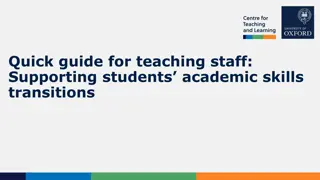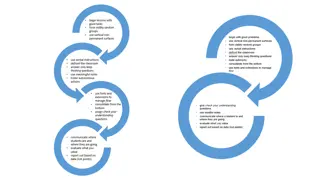Enhancing Teaching Through Effective Peer Observation Practices
Peer observation of teaching can be highly beneficial when conducted with specific outcomes in mind. Key elements include scheduling observations strategically, establishing departmental best practices, distinguishing between summative and formative reviews, and adhering to institutional policies. The ideal process involves thorough preparation, constructive feedback, and meaningful follow-up discussions to foster continuous improvement in teaching quality.
Download Presentation

Please find below an Image/Link to download the presentation.
The content on the website is provided AS IS for your information and personal use only. It may not be sold, licensed, or shared on other websites without obtaining consent from the author. Download presentation by click this link. If you encounter any issues during the download, it is possible that the publisher has removed the file from their server.
E N D
Presentation Transcript
What outcome of peer observation would make doing PO s of teaching not only worth your time, but a very good use of your time?
How to do a good observation of teaching Victoria Bhavsar, Cal Poly Pomona Faculty Center https://tinyurl.com/PeerReviewFeb20
Three good ideas to start Schedule observations Weeks 4-7 When you schedule an observation (1-2 hr), at that moment also calendar, that week: 0.5 1 hour to meet/talk/email ahead of time At least 1 hour to review materials ahead of time 1 - 1.5 hours to write up your report afterwards Consider how seriously YOU want your teaching to be treated, and reciprocate
Four departmental best practices Devote a faculty meeting (or more) to discussing the purpose of peer review, essential elements of excellent teaching, and agreement about what counts as evidence Train reviewers on observing and reporting Designate experienced faculty with established good teaching reputations as reviewers, and visibly appreciate their efforts Give people review criteria at the beginning of the semester; have it posted somewhere so they always have access
Summative vs formative PRT Summative review means graded for quality. Formative review is for one s own benefit, to improve.
We require summative PRT CPP Policy 1328.3.3.B for tenure line faculty: Peer evaluation of teaching shall include classroom visits and a review of course syllabus and related material . CPP Policy 1336 for lecturer faculty: Student evaluations Review of materials Statement by dept chair Many departments specify classroom observation
The Ideal Process Review of course materials Construc -tive report Written response to report Pre-visit convo Post-visit convo Visit
The Normal Process: Visit Emails to schedule Hasty Report
The Effective Process Pre-review convo Review of materials Constructive report Visit Optional but good: Post- visit convo
How to make ONLINE observation work well: NOT Optional but good: Post- review convo OPTIONAL: Pre-review convo Constructive report Review CSU Chico online course rubric
Observing strategies and instruments for face to face classes
Setting up Be in place before class begins Sit in the back or far to one side Smile and nod, but just observe, don t participate Agree about taking notes on a laptop or not Concentrate on the job no email! Stay the whole time*
Taking notes: Write detailed observations in a 2-column format left for evidence, right for reflection
What to look for: Note the time frequently. What is happening? What are the students doing? How many of them are doing it? What is the professor doing? How are the students behaving? What is the room like? What s the light, sound, smell, etc.? Is there anything interesting, such as a class of 20 women and 2 men or vice versa? Is there evidence that this characteristic influences the class dynamic? And anything else you can think of.
Two frameworks when theres no instrument: 1. Contact between students & faculty 2. Reciprocity & cooperation among students 3. Active learning 4. Prompt feedback 1. Preparation & organization 2. Clarity 3. Perceived outcome or impact (relevance) 4. Stimulation of interest 5. Encouragement & openness 5. Time on task 6. High expectations 7. Respect for diverse talents & ways of learning Feldman, K. A. (1998). Identifying exemplary teachers and teaching: evidence from student ratings. pp. 391-414. Teaching and Learning in the College Classroom 2nd ed., K. A. Feldman and M. B. Paulsen, eds. Needham Heights, MA: Simon & Schuster. Chickering, A.W., and Z.F. Gamson. 1987. Seven principles for good practice in undergraduate education. AAHE Bulletin pp. 3- 7, March 1987.
When theres an instrument, use it to guide evidence-taking Make sure you each understand and agree about the criteria Make sure you each understand and agree about the criteria and standards and standards Excellent Good Satisfactory Poor Unacceptable Instructor well prepared Session well organized Effective communication of ideas Enthusiasm Attitude toward students Stimulation of student interest Level of student participation Quality of answers to questions
After observing: Writing a useful report Be organized, clear, and concise Be honest, accurate, and constructive Focus on controllable things
Samples of good observation instruments Ethnic & Women s Studies Liberal Studies Psychology & Sociology Physics & Astronomy
Discussion of issues: Whats needed for good peer review
Elements for a non-damaging PRT program Clarity on essential elements of excellent teaching, with flexibility for individual academic freedom Agreement about what counts as evidence for excellence Consistent observation instruments and reporting templates Bonus: Trusted, expert, trained peer reviewers
Elements for an outstanding PRT program Clarity of purpose what do we want to achieve? Clear policies in congruence with the purpose Clarity on essential elements of excellent teaching, with flexibility for individual academic freedom Agreement about what counts as evidence for excellence Consistent observation instruments and reporting templates Trusted, expert, trained peer reviewers
Resources Vanderbilt: Peer Review of Teaching Ethnic & Women s Studies Liberal Studies Psychology & Sociology Physics & Astronomy CSU Chico online course rubric
